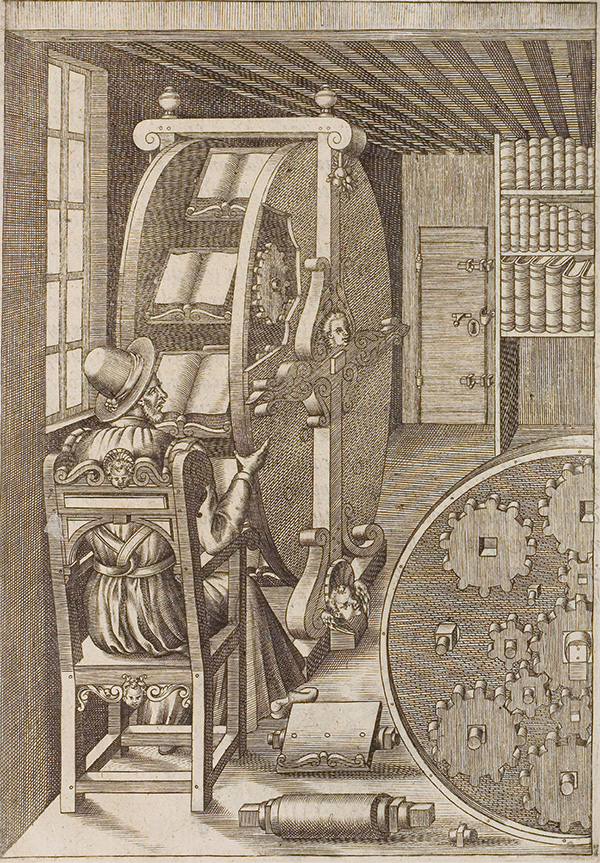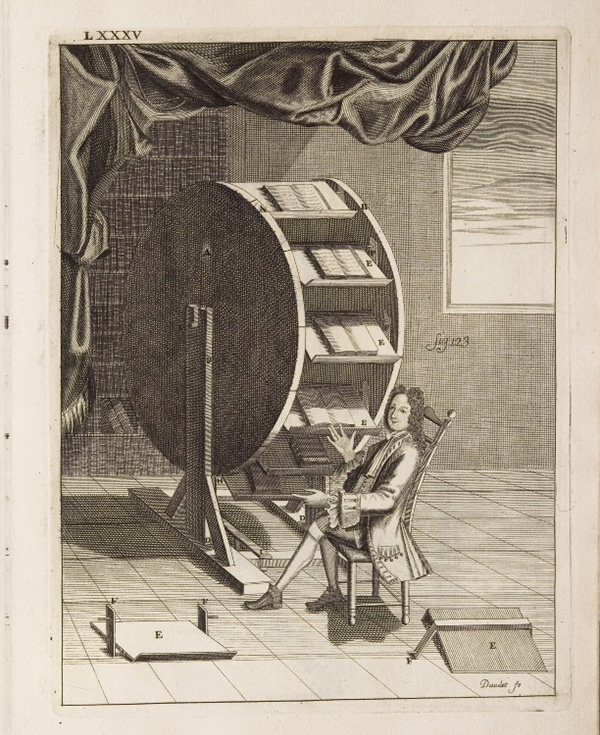It’s easy to take thousands of books on holiday with you these days thanks to the e-reader, a device that can store enough books to keep you reading for months. E-readers are especially great for people who like to read lots of books at once as they automatically remember where you left off last time.
But they’re nothing new. As early as 1588, the Italian military engineer Agostino Ramelli invented a device that allowed people to read multiple books at the same time, without having to worry about remembering page numbers. The so-called bookwheel (or reading wheel) could hold many (heavy) books, so it was possible to change books with minimal effort. The device provided a comfortable reading chair and through a sophisticated mechanism - similar to that of a ferris wheel - the books would remain facing upwards while the wheel turned.
 Figure CLXXXVIII in Le diverse et artificiose machine del Capitano Agostino Ramelli, an illustration of a bookwheel. Public Domain marked. Source: Wikimedia Commons
Figure CLXXXVIII in Le diverse et artificiose machine del Capitano Agostino Ramelli, an illustration of a bookwheel. Public Domain marked. Source: Wikimedia Commons
Ramelli’s design was later improved by the French inventor Grollier de Servière, who was born in Lyon and in his youth pursued a military career that took him to Flanders, Germany, Italy and Constantinople. When he retired, he put his skills to use creating an improved version of the reading wheel.
 Recueil d' ouvrages curieux de mathematique et de mecanique, ou description du cabinet, p. 309. CC BY-SA Max-Planck-Institut für Wissenschaftsgeschichte (source)
Recueil d' ouvrages curieux de mathematique et de mecanique, ou description du cabinet, p. 309. CC BY-SA Max-Planck-Institut für Wissenschaftsgeschichte (source)
